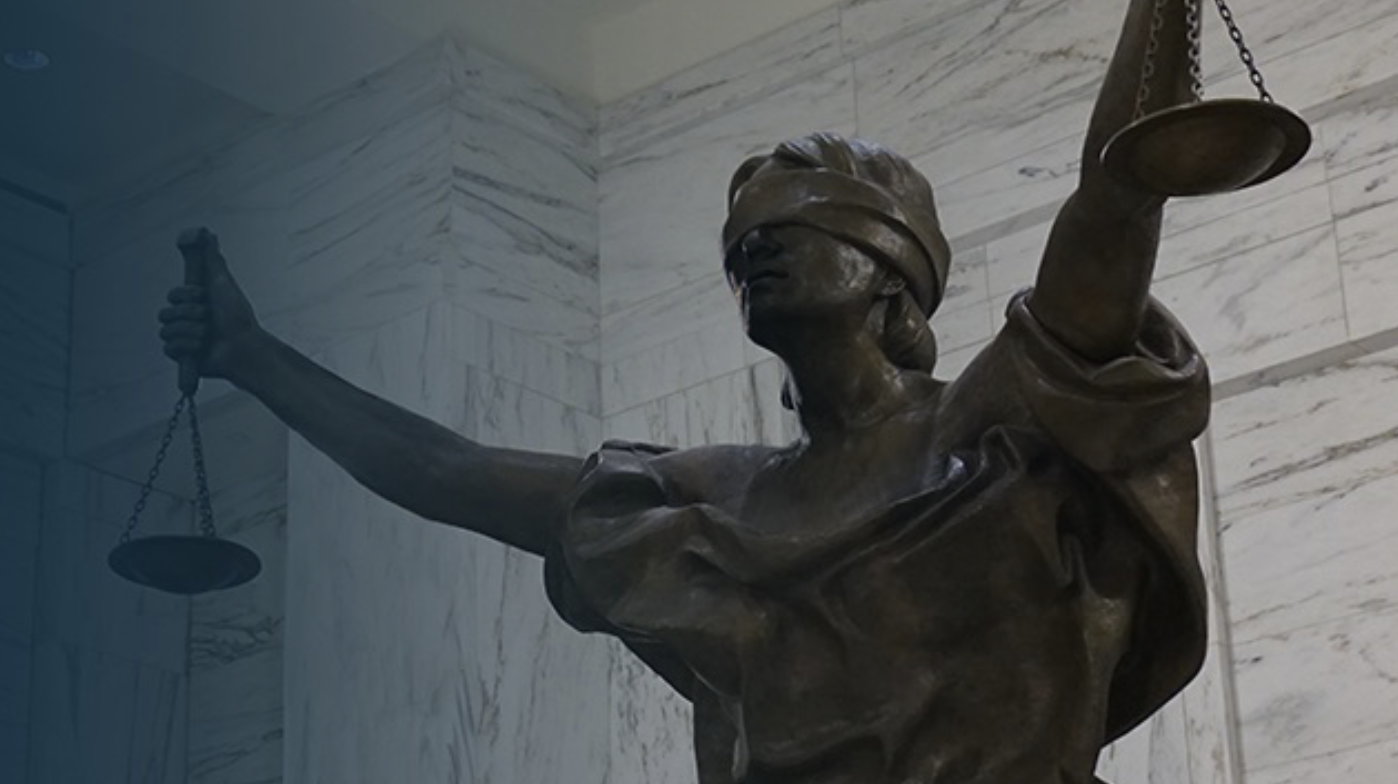Filing U. S. District Court Complaint
(This page is only applicable for federal employees or applicants who sought federal employment.)
When the federal agency issues a Report of Investigation (ROI) on your formal EEO complaint, you will be given the following two options:
(1) Request hearing at EEOC or final agency decision (FAD) in lieu of hearing.
(2) File a civil action discrimination complaint.
Later, when you receive Final Agency Decision (FAD), you will have the following two options: (1) file a civil action complaint at U. S. District Court, or (2) file an appeal with Office of Federal Operations (OFO).
It is better to file a civil action complaint at a federal District Court than to request EEOC hearing or, later, file an appeal with OFO. Because most cases nowadays are dismissed on summary judgment by EEOC administrative judges (AJs). And OFO is an arm of EEOC.
If you still want to request EEOC hearing, it must be requested within 30 days of receipt of the Report of Investigation (ROI) issued by the federal agency’s EEO office. Hearing can be requested via online in the federal sector of EEOC portal. Visit EEOC.gov.
EEOC administrative judge’s decision cannot be appeal directly. Instead, Final Agency Decision (incorporating EEOC AJ’s decision) can be appeal to the Office of Federal Operations (OFO) within 30 days, or to U. S. District Courts within 90 days (see below for more detail).
A civil action complaint must be filed within 90 days of receipt of the notice of your right to do so (when you receive ROI) or within 90 days of receipt of the final agency decision (issued on your formal EEO complaint).
The file date is the date when your civil action complaint or other pleading is received by the U. S. District Court.
The U. S. District Courts are governed by the Federal Rules of Civil Procedure (FRCP) (a code of rules and regulations governing civil litigations nationwide) and the Local Rules (a more detailed code of rules and procedures specific to the District that further governs the Court).
FRCP can be easily searched by section numbers on online.
Local rules are found in each District Court’s website. In general, local rules are similar nationwide, as they further elaborate Federal Rules of Civil Procedure.
A civil action Complaint (of discrimination) must be filed with U. S. District Court in the juditial district where the alleged discrimination occurred.
Each U. S. District Court may have the complaint form or a template that you can use. Check the Court’s website. Or, go to Store for samples and purchase of Complaints. Some Court templates are confusing or not helpful.
A civil action complaint of discrimination must be file at the federal district court within 90 days of the receipt of Final Agency Decision (FAD) or that of Report of Investigation (issued by Agency’s EEO HQ) which is issued with a notice of your election rights.
Excurses
For those who received MSPB’s final decision, a request for U. S. District Court’s de novo review of your MSPB final decision (on the EEO components only) must be filed within 30 days of receipt at U. S. District Court.. 5 U.S.C. § 7703(b)(2). Or, instead, you may file an appeal of the Final MSPB Decision (on your discrimination claims only) to Office of Federal Operations (OFO) within 30 days of receipt of final MSPB decision. 5 U.S.C. § 7703(b)(1).
A request for judicial review of MSPB final decision (on non EEO claims) must be filed with US Circuit Court of Appeals for the Federal Circuit within 60 days of issuance of MSPB Final Decision. 5 U.S.C. § 7703(b)(1)(A).
Advice: Do not seek Federal Circuit Court’s review of your EEO claims in your MSPB Final Decision. If you do, the Federal Circuit Court will remand the case to U. S. District Court, because the Federal Circuit has no jurisdiction on your EEO claims in your final MSPB decision.
In other words, you can do both after you received final MSPB decision: (1) Seek Federal Circuit Court review on your non EEO claims within 60 days of issuance (as you abandon the discrimination claims at the Federal Circuit Court), and (2) seeking U. S. District Court’s de novo review of your discrimination claims in your Final MSPB decision within 30 days of receipt.
Filing U. S. District Court Complaint - continued
4. A new civil action (discrimination) complaint can be filed at US District Court by any mail carriers, such as FedEx, UPS, US Priority, or Certified Mail.
5. A new Complaint is filed at the Court (for court stamping and docketing) with the Court fee of $405 in check or money order, payable to the US District Court for the District where it is located.
6. When a new Complaint is filed at the Court, it should accompany Civil Cover Sheet (JS 44- as found online) and the Summons (three copies-a template is available on the local District Court website). Go to Store for samples and purchase of Summons.
7. Summons must be signed and sealed by the Clerk of US District Court.
However, some Clerks will sit on the Summons for awhile before signing and sealing it. It should be signed and sealed on the day of your filing.
I recommend filing by mailing, however, to avoid filling out unnecessary forms some court staff may require you to fill out and submit.
8. Do not write your complaint on the spot at the Court. Unclear complaint or mistaken phrase or terms in the complaint may cost your case dearly later on. Writing an accurate and good complaint will allow you to overcome Defendant’s dismissal motion that will most likely be filed later. See how to write a complaint or go to Store for samples of complaints for purchase and download.
9. The signed and sealed Summons (by Court Clerk) are either mailed to you or uploaded to the Court’s electronic Case File (eCF) system.
Check you mail for the signed and sealed Summons.
Check the Court’s eCF system to see if the signed and sealed Summons are uploaded in the Court’s eCF system.
You must e-register with PACER.gov (Public Access to Court Electronic Records) for a nominal annual fee in order to be able to view and download your or anyone else’s Court files nationwide.
Once you have a user name and password with PACER, the system will alert you via email when there is a new entry or upload in the Court’s eCF system on your case.
The online docket sheet will be updated as the case progresses in the system and will list all entries/uploads in your case. The docket sheet can be viewed and printed for later use if and when you file an appeal to US Circuit Court.
Accessing, viewing, and downloading your court files via PACER/eCF does not mean that you can file pleadings via PACER/eCF, as attorneys can.
In order to be able to e-file pleadings via PACER/eCF, the Court must grant you the permission. Go to Store to purchase a sample for requesting eCF filing privileges.
E-filing is convenient when you are rushed against deadlines. You are not bound by the close of business hours when filing via eCF.
While you and anyone else can look up and download your case file (for a small fee after the first download), only you (as pro se) or your attorney can e-file a pleading on your case. Although attorney’s designated paralegal person can e-file on your case, you cannot as pro se. This is not fair, in my opinion.
10. Although Plaintiff pro se can file his or her complaint and (three copies of) Summons to the Court, he or she cannot serve the Complaint and the (signed and sealed) Summons to the Defendant and Defendant’s attorneys. Instead, anyone older than 17 years of age can serve the Summons and the Complaint to Defendant and Defendant’s attorneys. (See below for more details on how to serve the Complaint and the Summons).
See below for inserting three different addresses on the Summons on the three different copies: (1) addressed to Defendant, (2) addressed to U. S. Attorney General, (3) addressed to U. S. Attorney in the District..
11. When you are filing your complaint and (unsigned and unsealed) summons at the Court in person, make sure that you get the Court stamped receipt, showing the file date.
12. The signed and sealed Summons, as stated already, may be uploaded (by the court staff) to the Court’s electronic Case File (ECF) system (online), mailed to you, or given to you in person (if you are filing in person at the Court).
13. You can download the signed and sealed summons from the Court’s eCF, if they are uploaded to the eCF by the Court Clerk.
Again, to be able to view and download your court files online via ECF, you must first open an account with Public Access of Court Electronic Records (PACER.gov) for a small annual fee. With a PACER account, anyone can look up any federal court cases available online.
To be able to file pleadings via ECF, however, federal District Courts require that you obtain a permission to do so. Visit Store for a sample and purchase of eCF pleading permission request.
14. The signed and sealed Summons must be served within 90 days of Court’s receiving of your Complaint - the 90 days from the Complaint file date. The file date is Court’s receipt date. If you expire the 90 day period, your case may be dismissed for failure to prosecute.
I have seen cases where Clerk either failed to sign and seal Summons or signed, sealed, and uploaded the Summons without notifying you that they are uploaded—so that you may expire the 90-day window period in which to serve the Summons to Defendant and Defendant’s attorneys.
Be ware of the Court Clerk/staff. Some are helpful, some are not. They have no obligation to advise you, as they are not your attorneys.
15. The Summons should be served to three different addresses: one to the Defendant (usually the Secretary or head of the US Department in DC-see FRCP 4(i)(2)), the second to U.S. Attorney General (in DC-see FRCP 4(i)(1)(B)), and the third to the U.S. Attorney in the federal district where the District Court is located (usually across the street from the Court-see FRCP 4(i)(1)(A)). Go to Store for samples of Summons with proper addresses for purchase and download.
US Attorney or Assistant US Attorney in the federal district will formally represent the Defendant, the federal agency you are filing against.
16. The signed and sealed Summons must be served to Defendant and Defendant’s attorneys by U.S. Certified Mail only together with Complaint. It cannot be served by any other carrier, such as FedEx, UPS, or US Priority or regular mail. Return receipt for Certified Mail is not required.
17. Defendant, if a federal agency, must file an Answer (or a response to your Complaint) within 60 days of service. Non federal defendant is required to submit an Answer within 21 days of service.
18. Defendant will likely file a motion to dismiss the case based on procedural grounds, in lieu of filing an answer.
Disclaimer
Mr. Lee is not an attorney but can represent clients in federal administrative processes, including EEOC hearings and MSPB hearings.
Mr. Lee cannot and does not represent clients at any judicial proceedings such as US District Courts (USDC), US Circuit Court of Appeals (USAC), or US Supreme Court (SCOTUS).
EEO 21, LLC, or Mr. Lee does not provide legal advices in any of these pages in this website.
Advices provided herein are based on his personal experience over 20 years in the field of discrimination and must be taken at one’s own risk.

